Disclosure: We may get commissions for purchases made through links in this post.
Dogs mark their territory by repeatedly peeing in the same spot. And as if the smell is not bad enough already, their urine often leaves stains to seal the deal that this spot is theirs. Now, let's say a dog seized your stone paver as their new domain - will it stain, and how can you remove it? Not to worry, we've looked closely at how urine interacts with various stone pavers.
Dog urine dries into powerful alkaline salts, that can eventually etch the surface, damaging your stone pavers. Prevent staining by cleaning any pet accidents and immediately blotting with a paper towel or terrycloth. Don't use any corrosive, acidic cleaning products, and avoid rubbing the surface as it will only spread the urine.
Aside from dog urine, other things can stain your stone pavers. Keep on reading to know more about removing these stains and the answers to other frequently asked questions about paver maintenance.
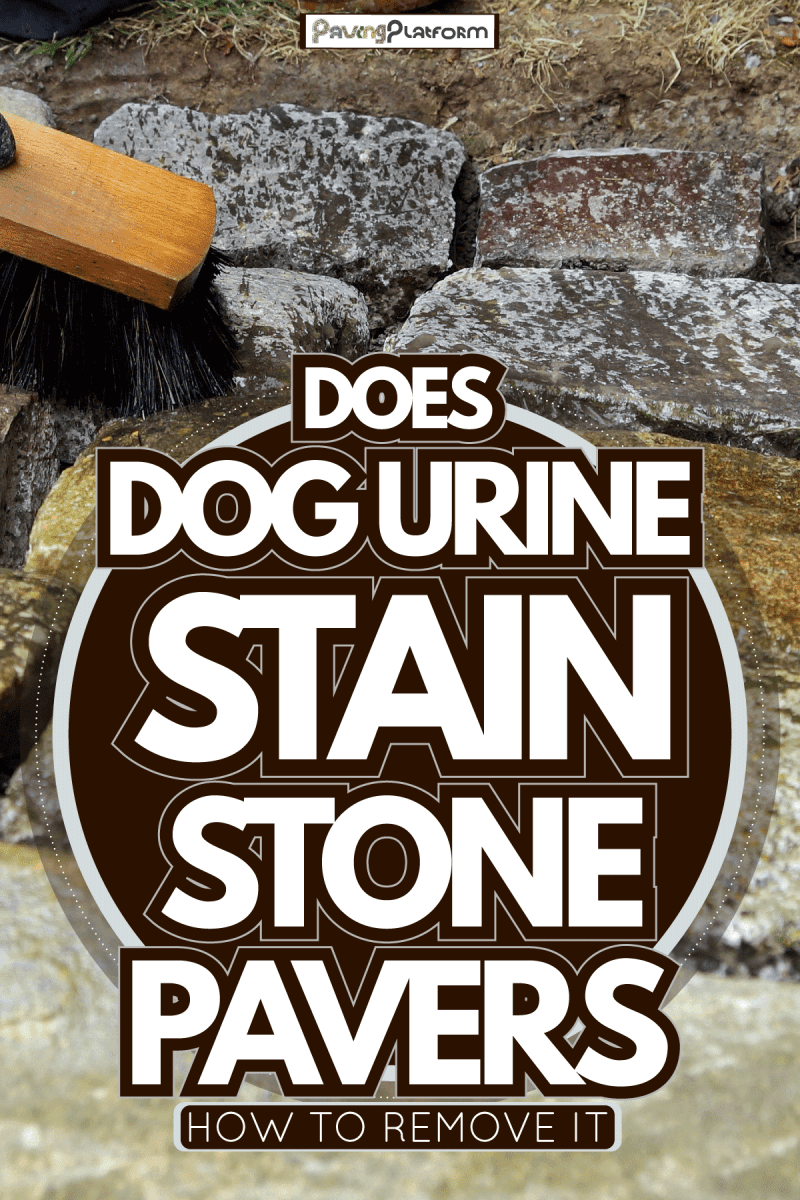
What Are The Different Types of Natural Stone Pavers
Stone pavers are one of the go-to design pieces for homeowners; their elegant yet straightforward finish elevates the aesthetics of your outdoors. A variety of natural stone pavers are on the market; this guarantees you that there's one material that will suit your taste regardless of your style.
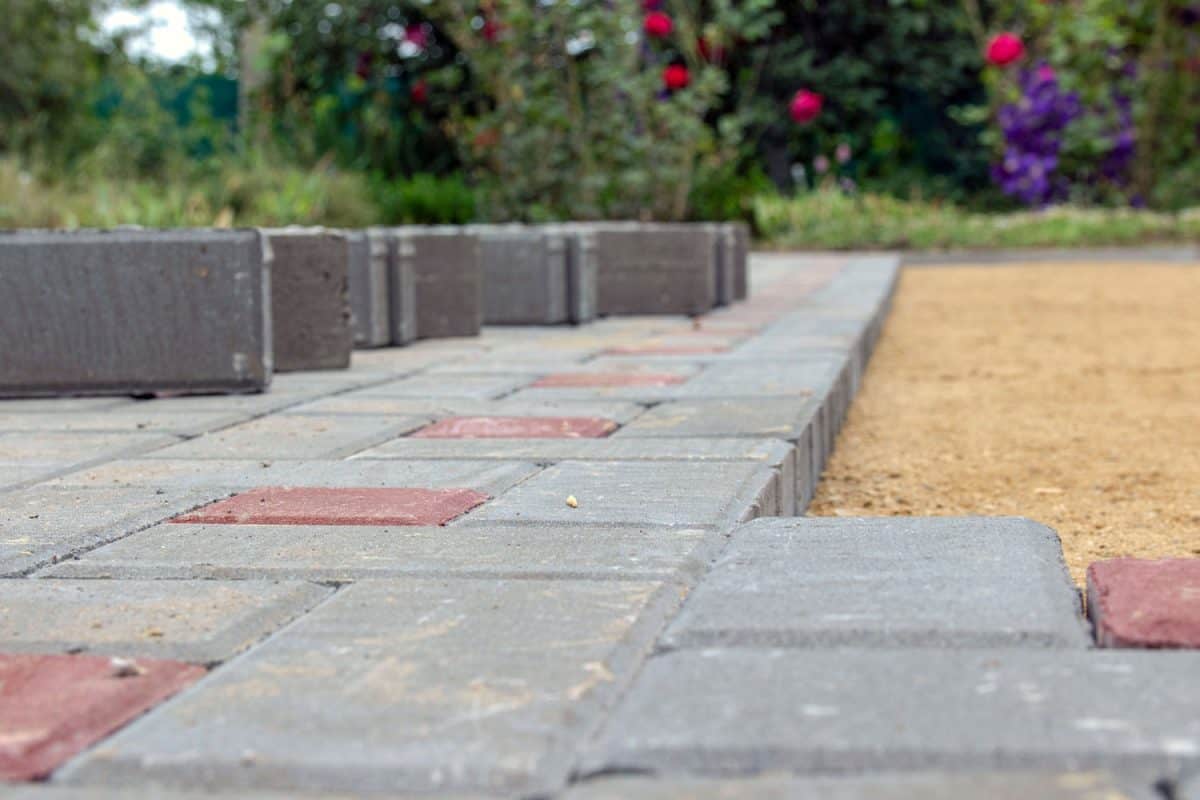
- Travertine - perfect for poolside decks due to its antiskid texture
- Slate - commonly used in residential and commercial areas since it is weather resistant and known for its hardwearing properties
- Marble - provides the highest quality appearance due to its luxurious appeal; not recommended for outdoor use since it is a soft stone making it easy to stain and etch
- Granite - is a current favorite because of its versatility and durability, cheaper alternative to marble
- Sandstone - is sturdy and is a popular choice for block pavers and driveways
- Cobblestones - customizable, has a rustic appeal and high-load bearing capacity
- Flagstone - slip and acid-resistant, easy to maintain
What Are The Common Stains on Stone Pavers [Including How To Remove Each]
There will always be things beyond our control, and one of these is stains. No matter how careful we are, we can't avoid having our stone pavers soiled, especially with their location, 24/7 exposed to dirt, moisture, and varying weather conditions.
Here are some of the common stains on stone pavers and how to remove them:
Rust
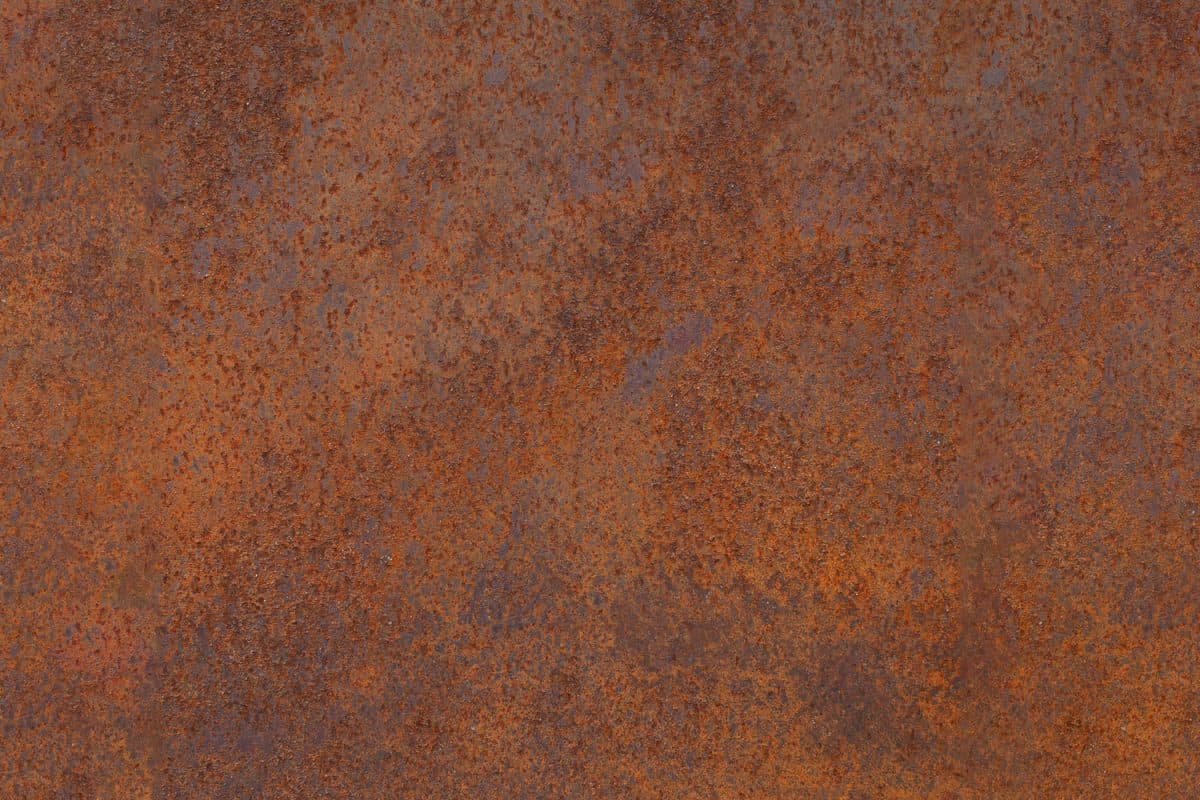
Rust will begin to form when metals experience exposure to oxygen and moisture (water, humidity, vapor, etc.). Decorative pieces like furniture and lawn maintenance tools lying down on the surface are the common causes of rust stains on stone pavers.
Use rust removers and a stiff brush to scrub the corrosion off. Test this out first in a small secluded portion of your pavers to see the effect since rust removers can damage the sealer.
Pro-tip: you can also use cola to substitute for rust removers because these two have almost the same ingredients. Let it sit for the whole day, then wash it off with water.
Grease
Thanks to oil and transmission fluid, your pavement might already resemble an abstract painting, not the pretty kind. Get yourself some cat litter. Rub this on the stain and let it sit out for an hour or two before sweeping it up. Litters are super absorbent and soak up the stain.
Mold and Mildew
Confused as to why you have a mold problem on your pavers? Well, it could be due to the lack of sunlight, constant moisture, poor drainage or all of the above. It's pretty easy to remove, but you'll need to exert some manual labor. To eliminate this problem, use OxiClean or pool shock.
Coat the stained surface with a diluted mixture of 4 scoops of OxiClean to 1 gallon of water or 1/2 pound of pool shock to 4 gallons of water. Scrub with a nylon bristle brush, then rinse with water.
Click here to see OxiClean on Amazon.
Food Drips
Whether from beef patty grease, ketchup, or candy, it falls under this category as long as it's edible.
- Squeeze some liquid dish soap on the stain
- Let it sit for 20-30 minutes
- Brush away, and repeat as needed.
Caulk or Chewing Gum
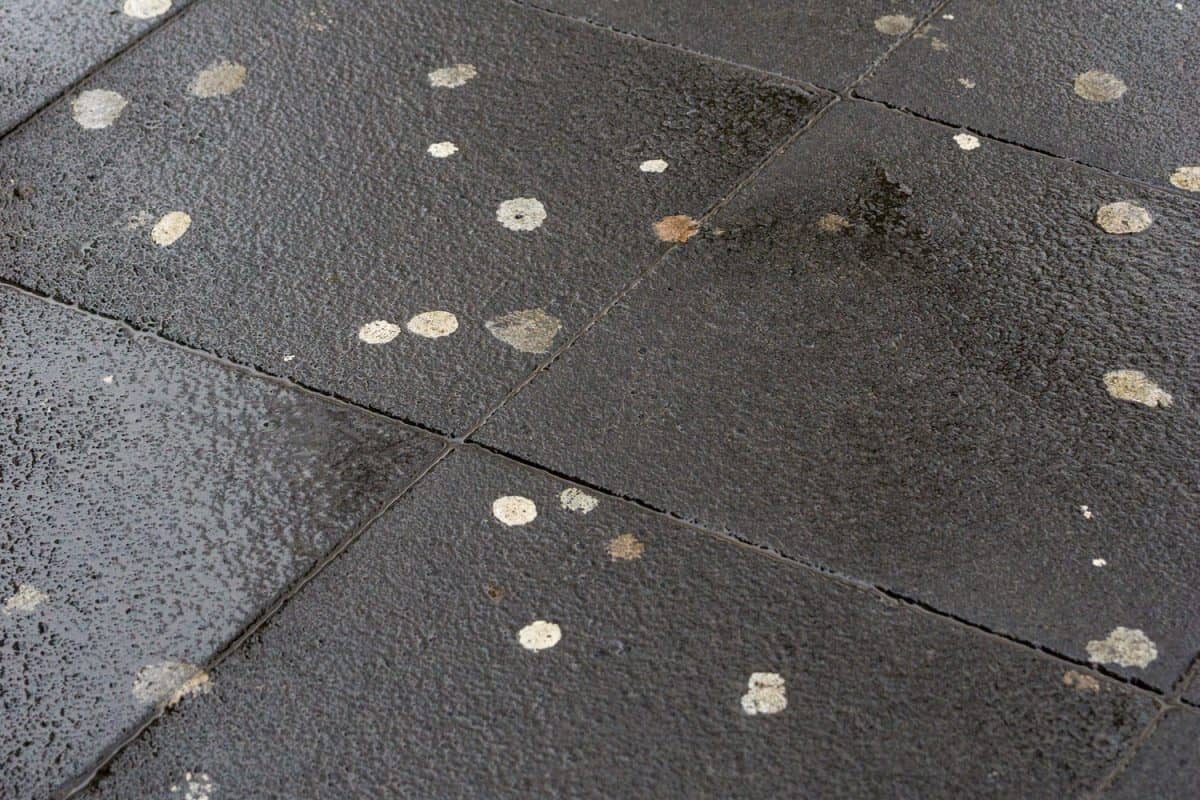
Different products but each leaves the same sticky residue and therefore, the same cleaning solution. Scrape the excess goop, then scrub with any denatured alcohol solution.
Leaf, Wood Rot, and Mulch
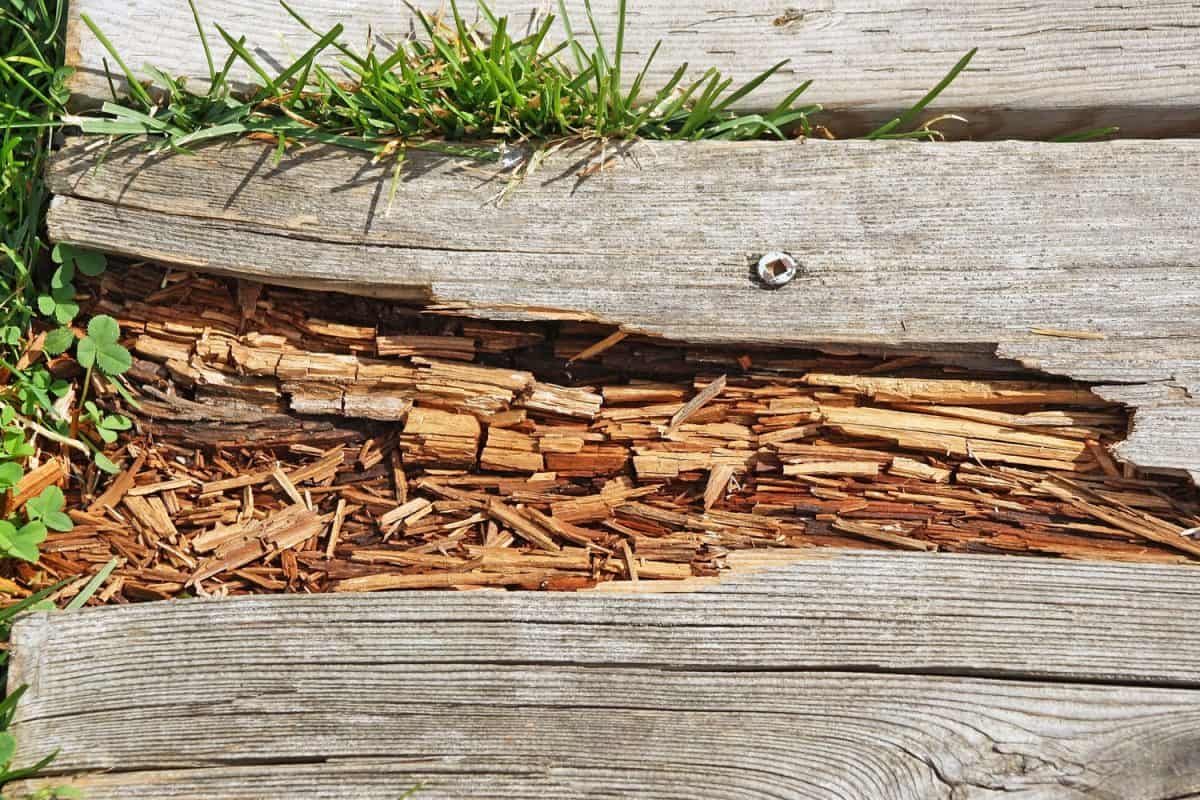
Cut mother nature some slack; a few stains are nothing compared to the beautiful greens you enjoy during various times of the day. You can quickly solve these with OxiClean and pool shock.
For OxiClean and pool shock, the procedure for stain removal is standard, but you can still adjust the measurement and duration depending on the severity of the stain. Coat the stained surface with a diluted mixture of 4 scoops of Oxiclean to 1 gallon of water or 1/2-pound of pool shock to 4 gallons of water. Scrub with a nylon bristle brush, then rinse with water.
Paint
And this is why we put coverings on carpets, furniture or any interior decorations, to avoid soiling it. Of course, your stone pavers are no exception.
Removing Wet Paint
Fresh paint should be mopped up immediately with rags or paper towels by blotting.
Remember, blot, not wipe unless you want to spread the paint stain even more. Soak it with hot water, then scrub it off with a stiff brush and scouring powder until no improvement is seen.
Removing Dry Paint
You can remove dry paint by scraping the excess paint. Dab some chemical paint remover and leave it on for 20-30 minutes. Loosen it with gentle scrubbing, and blot the loosened paint. Just a tip, latex paints are easier to remove when wet.
Tire Skid Marks
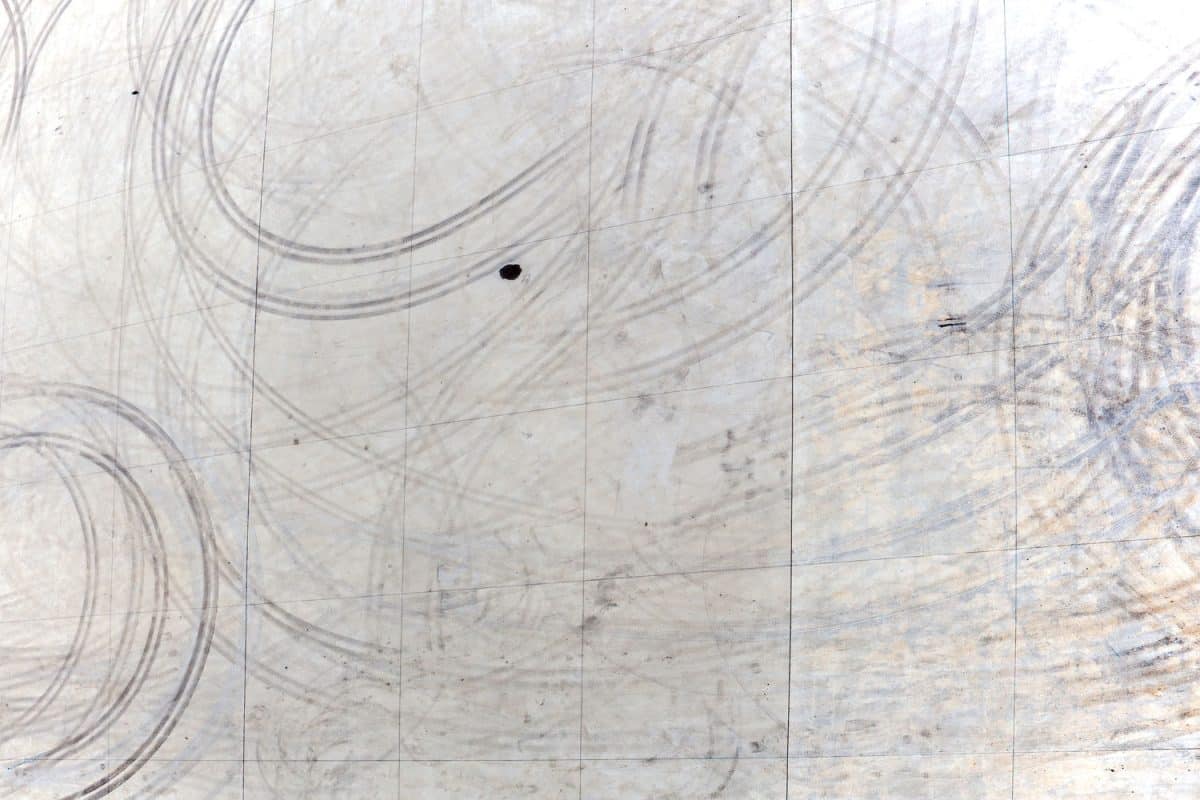
It's fairly straightforward to clean tire skid marks. First, you have to get a bucket of water and a detergent. Wet the surface, then scrub away. It may take quite some time, but with enough perseverance, you'll be able to remove the tire skid marks.
How To Stop A Dog From Peeing In The Same Spot
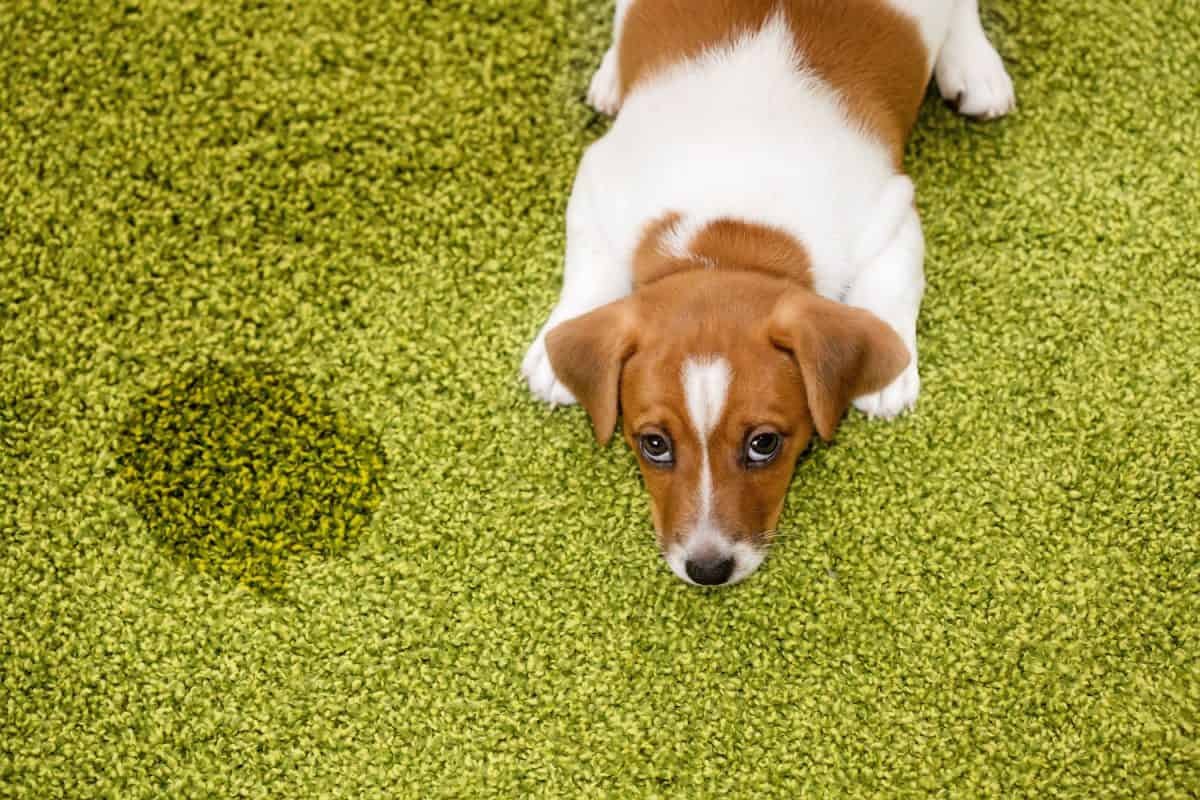
Potty training your pooches is probably the most effective way of preventing dog pee stains on your stone pavers. Here are some tips you might want to try to stop this behavior:
- Neuter or spay your dog: their pee can also be considered an invitation to the opposite sex wherein their status is "I'm Available!" According to APSCA, neutering male dogs reduces marking by 50-60%. It may take a few weeks before the marking stops, but it will eventually happen. It is best to neuter early to avoid marking behavior patterns that can be difficult to break.
- Clean the urine before the stone pavers soak it up. Remove possible traces of the mark with a non-toxic odor eliminator like vinegar. Additionally, you can place the urine-soaked rag or paper towel in your preferred potty location.
- Place treats or food in areas where they frequently pee. Dogs, much just like humans, don't like to eat in areas where they relieve themselves. If food is in their marking location, they may consider it an eating area instead of a toilet.
- Restrict the area, if possible create a maze-like system of barriers that direct them to their designated toilet
Training your dog for whatever purpose is not an easy battle. Sometimes, you might feel like you're playing a losing game, but you have to remember that consistency is critical. With various options in hand, choose one or combine 2-3 methods that merit a response and stick to it.
Conclusion
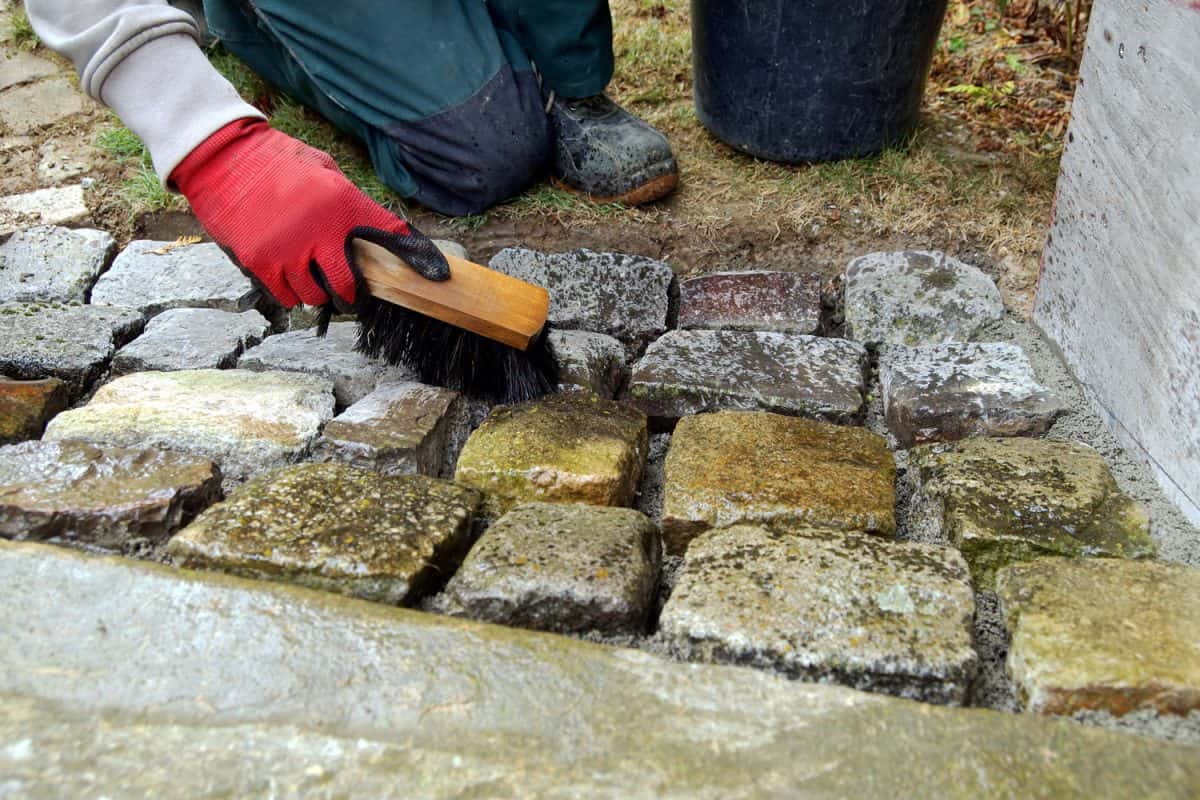
The good news is you can remove the stains, bad news requires patience and manual labor. As you may have noticed, stains need some waiting time and a generous amount of scrubbing. If you have extra cash to spare, why not replace it as a whole and upgrade your pavement, although you can opt to return the affected area.
We hope that this post helped you in sorting your stone paver problems, and if this post helped you, we have other articles that tackle problems similar to this:


![Blue stone pavers on the garden patio, How To Clean Bluestone Pavers [Care & Maintenance Tips]](https://pavingplatform.com/wp-content/uploads/2022/03/Blue-stone-pavers-on-the-garden-patio-600x400.jpg)
![washing services - block paving cleaning with high pressure washer - Can You Pressure Wash Travertine Pavers? [Best Cleaning Methods]](https://pavingplatform.com/wp-content/uploads/2022/03/washing-services-block-paving-cleaning-with-high-pressure-washer-600x400.jpg)
![Do I Need Expansion Joints In Concrete? [Incl Slab, Sidewalk, Stamped Concrete, Driveways, & Pavers], Do I Need Expansion Joints In Concrete? [Incl Slab, Sidewalk, Stamped Concrete, Driveways, & Pavers]](https://pavingplatform.com/wp-content/uploads/2022/03/Roof-structure-or-bridge-expansion-for-safe-connection-of-two-expandable-concrete-bodies.-rubber-joint-in-a-metal-bar-stock-600x400.jpg)